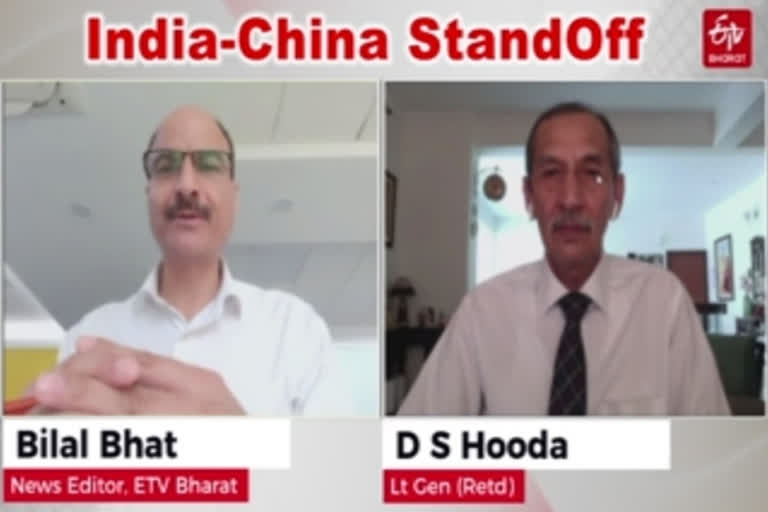Hyderabad:The stand-off between the Indian and Chinese troops in the Galwan valley took a tragic turn after three soldiers, including an officer, were killed in a violent face-off between the two parties during the de-escalation process. This is the first time after 1975 that any casualties have been reported at the LAC. In an exclusive interview with ETV Bharat, Lt Gen (Retd) DS Hooda talks about the implications of such confrontations and the way forward.
The India-China Standoff in the Galvan valley at LAC in the Ladakh region in which three army men including a colonel lost their life, this has happened during the de-escalation process, your take?
It was said that de-escalation has started. It seems the situation is very serious on the borders. The way this incident has taken place where casualties have taken place on both sides, it is the first time after 1975. It is a very serious incident. What can be its impact? how it can be resolved? I think the situation has taken a very serious turn in Ladakh.
Why say it is complicated, wasn’t it complicated before. Do you say so because bullets were not being fired?
It doesn't matter whether bullets have been fired or not. The bigger issue is violence not happening between the two armies. There are hundreds of transgressions every year but there are protocols between the two armies, if there are transgressions and our troops meet during the patrolling, how can we resolve these issues amicably. The bullets have not been fired, but protocols have been broken. This is serious. People are dying. To say the bullets are not being fired means the situation is fine is not fair.
It is complicated because there is no peace at borders, you had conflicts in Doklum, Chumar, both armies had faced off but there was no violence. If such incidents take place where both sides suffer casualties, then it is difficult to find solutions.
This is maybe the only border in India where we get reports of two armies engaging in scuffles and stone-pelting. Please tell us about the geographical area, the kind of patrolling points around the Galwan valley, Pangong Tso lake which makes such confrontations possible.
This hand to hand fighting between the soldiers, who are in uniform, is wrong. It is like a street fight. It should not happen. The armies should not behave like this.
In the Eastern Ladakh, the LAC is more than 800 km, mostly plain though in a high-altitude area. The problem is the LAC is as such there is no agreement between the two countries. It is not mapped or marked. Therefore, the patrolling triggers the face-offs. But this time, the way the face-off took place indicates that it is not a normal patrolling. There is a planned activity from the Chinese side. They have come at four to five places with proper planning and manpower with reserves and heavy equipment.
Why have they chosen this particular point to fight at? Are they at an advantageous position against the Indian army?
